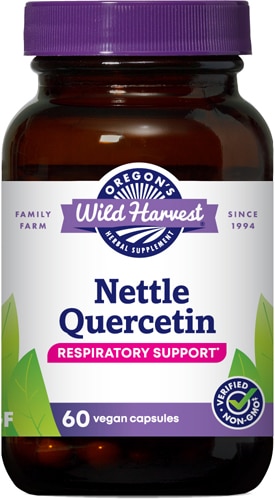Fall is finally here. And while the season offers relief from summer heat, it also poses a threat to those who suffer from autumn allergies.
The environment around where you live determines the risks you face. Residents of the Southwest might find that chenopod weeds are their biggest foe. Down in Texas, red mountain cedar trees provoke misery as they pollinate.
And in the Northeast and other areas, ragweed and molds can wreak havoc in the lives of countless residents, says Dr. Kevin P. McGrath, a spokesperson for the American College of Allergy, Asthma and Immunology, and a private-practice allergist in Wethersfield, Connecticut.
“Molds start in the spring and continue to build through the fall,” he says. “They increase when dead leaves hit the ground, as mold grows on dead leaves, grass, weeds and other vegetable matter.”
As fall moves into winter and the weather gets colder, a new allergy threat emerges.
“When it starts getting colder, people close up their houses and turn the heat on,” McGrath says. “Heat kicks up dust, which is made mostly of dust mite allergens.”
McGrath notes that dog and cat allergens also circulate around the house once the heat kicks in. And even people without pets can pick up these allergens on their clothes from pet owners at work and in other public environments.
Preventing fall allergy symptoms
Fortunately, you can take steps to help reduce or eliminate fall allergy symptoms.
Autumn yardwork often triggers a runny nose and other symptoms. So, if you plan to rake or blow leaves, wear a mask that keeps pollen and dust away from your nose and mouth.
“Wash your clothes immediately after working outdoors, as they will be loaded with molds and other allergens,” McGrath says. “Even better is to get someone nonallergic to do (yardwork) for you.”
Other suggestions for keeping fall allergy symptoms at bay include:
- Keep moisture levels down so that molds won't have the chance to grow. You can do this by eliminating standing water, cleaning gutters regularly and maintaining home humidity levels below 60%.
- If you have been outside for a while, take off your shoes and leave them at the door. Change out of your clothes and throw them in the washing machine.
- Shower -- and wash your hair -- before bedtime so you don't bring pollen to your pillows and bedding.
- Keep windows closed throughout the season. On especially warm days, don't hesitate to run the air conditioning.
- Try to stay inside on days when pollen and mold counts are high.
Treating fall allergy symptoms
If fall allergy symptoms strike, McGrath suggests taking an over-the-counter medications, such as a nasal steroid spray and low-sedating or nonsedating antihistamines.
While these may be effective for a period, it’s likely that symptoms will progress with time.
“Unfortunately, the natural history of allergies is to progressively get worse every year to the point where over-the-counter medications are not effective,” McGrath says.
At that point, see an allergist who can properly diagnose and treat your allergies, he adds. That is especially true if you feel fatigue related to allergic rhinitis, more commonly known as “hay fever.”
Such fatigue is a result of the inflammation of nasal allergies that keeps people from deep, restful sleep.
“They will often sleep eight to nine hours and still wake up with fatigue and muscle aches,” McGrath says. “I often refer to it as the ‘allergic funk.’”
An allergist can perform a skin test that will pinpoint specific allergens. The doctor then can recommend medications and environmental controls that will keep symptoms under control.
To find a board-certified allergist, visit the ACAAI website.
If you already take prescription allergy medications, the ACAAI reminds you that these drugs typically are most effective if you begin taking them a couple of weeks before symptoms usually arise.




